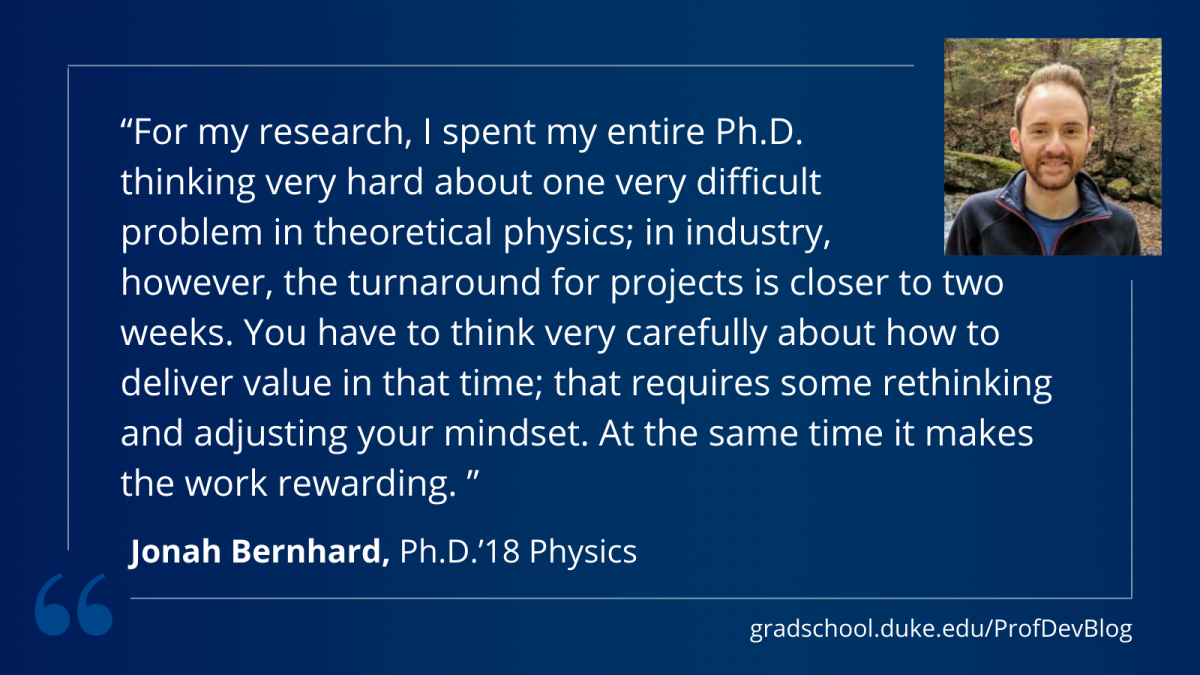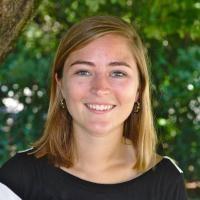
Blog
Alumni Profiles Series: Jonah Bernhard
Jonah Bernhard studied relativistic heavy-ion collisions at Duke and received his Ph.D. in Physics in May 2018. After graduation he worked at Lowe’s Companies, Inc. as a Data Scientist in Charlotte, North Carolina. He has quickly made an impact at the company and is now a Principal Data Scientist and a prominent member of the forecasting team at Lowe’s.
How did you get started in data science?
I started the job search after graduating. I applied to a lot of different places—a lot of online searches since I didn’t know that many people in the field. It was a mix of larger well-known companies and some more local ones.
How do you feel your Physics background prepared you for your role?
I think physicists make really good data scientists: they have creative thinking that is required to approach big open research problems. This lends itself really well to data science business problems. I didn’t feel like I had that much to learn to start the role, beyond some new technologies (Hadoop for instance and using cloud resources), but what was most valuable from my physics training was how to think and how to approach problems. We have a lot of people with physics backgrounds on the team. If you have coding experience, even if it’s in a different form than what’s used at the company, it can be adaptable.

What did you find to be the biggest adjustment in your transition to industry?
Probably the biggest change is the timeline in projects. For my research, I spent my entire Ph.D. thinking very hard about one very difficult problem in theoretical physics; in industry, however, the turnaround for projects is closer to two weeks. You have to think very carefully about how to deliver value in that time; that requires some rethinking and adjusting your mindset. At the same time it makes the work rewarding. Your work is immediately impactful, which is satisfying.
What does your work structure look like? Do you work in a team or on your own?
I work in a team of data scientists within the company, and different groups will come to us with problems that can be solved with data-science techniques. Within that umbrella I lead the forecasting team. We are trying to modernize forecasting with using more advanced machine-learning techniques. It’s not completely cleanly separated—there is cross-collaboration between teams—but more or less you are tied to a specific area, e.g. merchandising.
What advice do you have for students looking to enter the field?
Making the transition can be challenging, because you’ve been working for a long time on one area of research and know it really well, but the people evaluating you have not. You need to be able to translate your skills to more practical applications. It’s good to have a GitHub with open source code, so if you have time to work on projects in your spare time, you can showcase data apps on there. You can also work on Kaggle projects; some people have done data science internship programs, and there are data bootcamps like the Insight Data Science Fellowships that give you more experience outside of your research. It’s important to demonstrate how your background and skills will bring value to the company.
Author

Emily Phillips-Longley
Ph.D. student, Physics
Emily Phillips-Longley is a fifth-year Ph.D. student in the Physics program. Her research focuses on cosmology with the Rubin Observatory’s Legacy Survey of Space and Time (LSST). Her work is at the intersection of big data and current pressing questions about the nature of our universe. In addition to research Emily has enjoyed getting to know and serving Duke University and its graduate students through her former role as Vice President of GPSG, the Graduate and Professional Student Government.